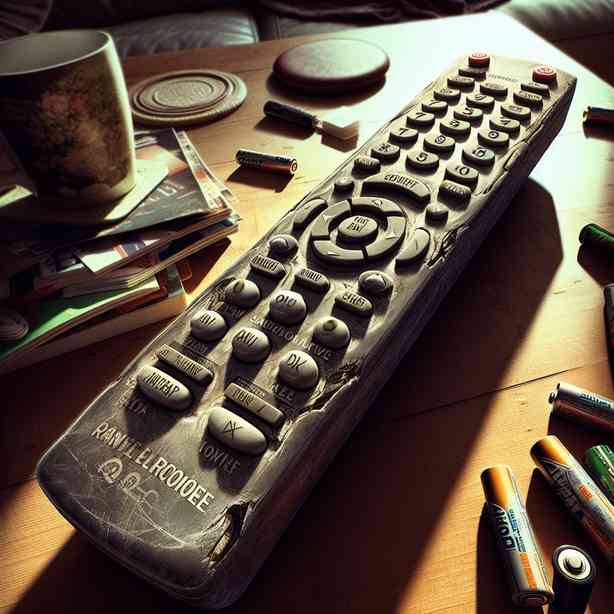
In the age of smart technology, we often find ourselves surrounded by gadgets designed to enhance our daily lives. However, a common frustration that many experience is the reliance on remote controls that frequently do not work as intended. This issue is not just an annoyance but can affect our overall experience with our devices, whether it’s a television, home theater system, or any other appliance that relies on a remote for operation. This discussion will delve into the reasons why remotes often fail us and what solutions exist to alleviate this problem.
One of the most prevalent issues with remotes arises from battery problems. Weak or depleted batteries are often the culprits behind the malfunctioning of remotes. When batteries are low on power, they can struggle to send the necessary signals to the device, leading to missed commands and frustrating experiences. To mitigate this, it is advisable to regularly check and replace batteries, especially if your remote uses traditional AA or AAA batteries that can lose power over time. Opting for high-quality batteries can also assist in ensuring a more reliable performance.
Another significant reason remote controls fail to work properly is due to physical obstructions. Many users unknowingly block the path between the remote and the device it operates. Items such as furniture, decorations, or even other electronic devices can interfere with the infrared signals that most remotes use. To improve functionality, ensure there is a clear line of sight between the remote and the device. Additionally, understanding your room’s layout can aid in positioning furniture and other items to avoid obstructions.
Moreover, the design of the remote control itself can lead to issues. Some remotes are cluttered with too many buttons or poorly labeled controls, making it easy to press the wrong buttons unintentionally. This not only frustrates users but can also lead to more complex issues when multiple devices are involved, such as a sound system paired with a television. Simplified remotes or universal remotes that consolidate multiple devices into one remote can greatly enhance user experience. These universal remotes often come with preset configurations and easy-to-understand layouts, thus minimizing confusion and maximizing efficacy.
Another common relationship between remotes and malfunctioning lies in the wear and tear of the physical buttons. Over time, frequent use can cause buttons to become sticky, unresponsive, or even fall off. This can be particularly annoying when trying to operate your device swiftly. To address this, regular cleaning of the remote can help ensure that dust and debris do not interfere with button functionality. Using soapy water and a soft cloth can assist in keeping the remote clean, as long as the device is turned off during this process, and moisture is kept to a minimum.
Technological advancements have also introduced the possibility of infrared interference. Other appliances within the vicinity, particularly those that also operate using infrared signals, can disrupt the remote’s functionality. Electronic devices such as fluorescent lights can sometimes emit signals that interfere with those sent by your remote. If you suspect this could be an issue, try relocating devices that may be causing interference or using a remote that operates on radio frequency instead of infrared.
Another factor that is often overlooked is the compatibility of the remote control with the device in question. Mismatched remotes and devices can result in significant inconsistencies in performance. For instance, using a remote designed for older models with newer devices may not yield the expected results. It is essential to ensure that the remote control is compatible with the device and that firmware updates are applied to both the remote and the devices it operates.
As technology continues to evolve, so does the way we interact with our devices. Smart home systems and voice-activated remote controls are revolutionary alternatives that are becoming increasingly popular. These systems eliminate many of the common issues associated with traditional remotes, such as battery failure and wear and tear. Integrating voice recognition technology into home systems allows for a seamless interaction that can be tailored to individual preferences, thus providing an enriching user experience.
Finally, advances in smartphone applications have allowed many users to control their devices via their mobile phones. This approach can often replace the need for a physical remote altogether, reducing the frustrations associated with traditional remotes. Many manufacturers offer mobile apps that interface directly with smart devices, allowing for comprehensive control from anywhere within the home.
In conclusion, while the frustration with remote controls that do not work as expected is a common experience for many, understanding the causes and exploring potential solutions can significantly improve the situation. From addressing battery issues to considering voice activation or mobile control alternatives, there are various ways to enhance your interaction with technology. Ultimately, the goal is to create a more enjoyable and hassle-free experience that aligns with the advancements in the digital age. Adapting to these changes can simplify your everyday activities and elevate your interaction with household devices. By being informed and proactive, you can help ensure that your remote control experience is as smooth as possible, allowing you to enjoy your devices without the constant annoyance of malfunctioning remotes.


